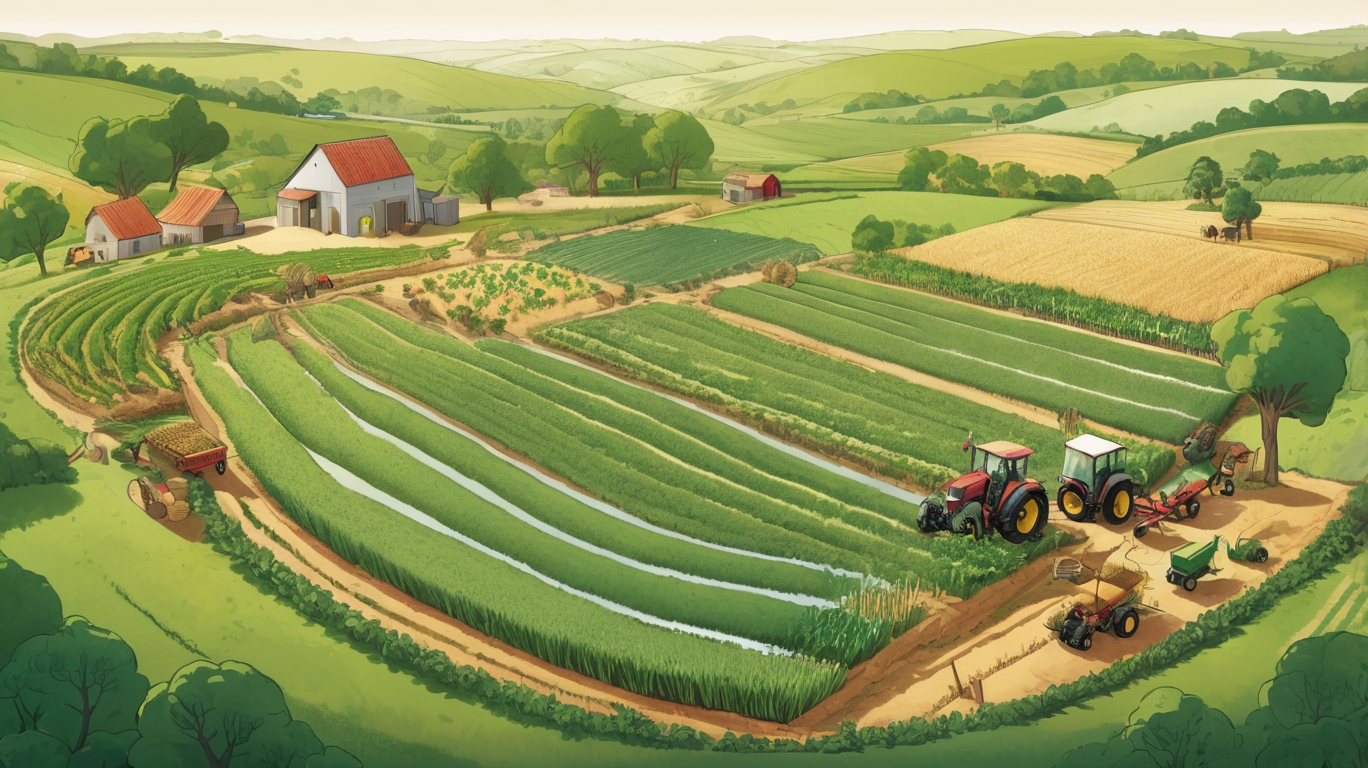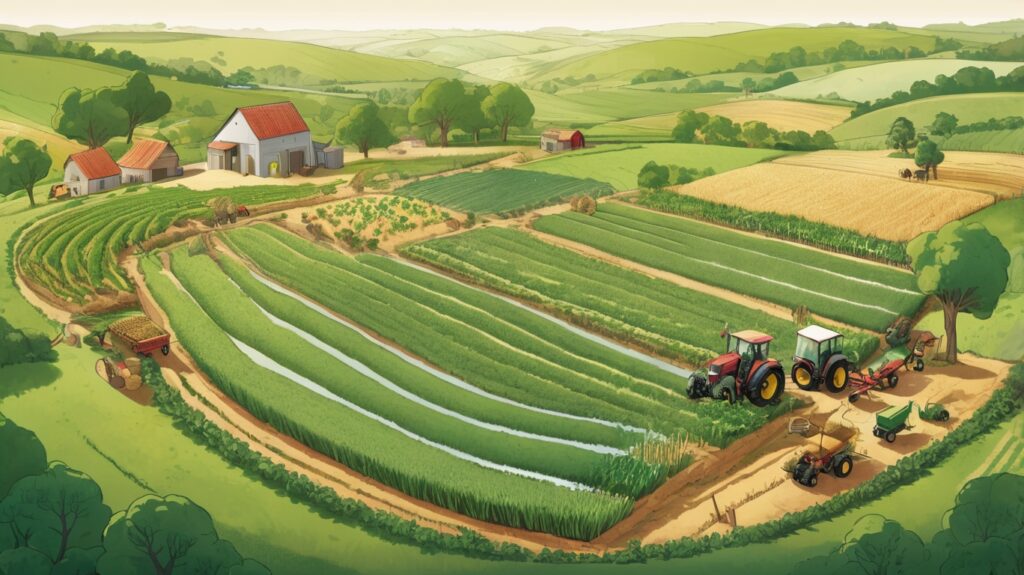Reducing Carbon Footprint in Agriculture: A Gentle Approach to Sustainable Farming
Agriculture is a vital part of our lives, providing the food we eat and supporting communities worldwide. Yet, it’s also a significant contributor to greenhouse gas emissions, accounting for about 10-12% of global emissions (according to the IPCC). The good news is that farmers, policymakers, and consumers can all play a role in making agriculture more sustainable.
In this article, we’ll explore simple, practical ways to reduce the carbon footprint of farming—without overwhelming the process. Small changes, when applied thoughtfully, can lead to meaningful progress.

Understanding Agriculture’s Carbon Footprint
Before diving into solutions, it’s helpful to understand where emissions come from in agriculture:
- Soil management: Synthetic fertilizers release nitrous oxide, a potent greenhouse gas.
- Livestock production: Cows and sheep produce methane during digestion (enteric fermentation).
- Deforestation for farmland: Clearing land releases stored carbon.
- Energy use: Tractors, irrigation, and processing rely on fossil fuels.
The key is not to eliminate farming but to shift toward low-impact, regenerative practices that work in harmony with nature.
Gentle Steps Toward Lower Emissions
1. Adopt Regenerative Farming Practices
- Cover cropping: Planting crops like clover or rye in the off-season keeps soil healthy, prevents erosion, and captures carbon.
- Reduced tillage: Minimizing soil disturbance helps retain organic matter and reduces CO₂ release.
- Crop rotation: Alternating crops improves soil fertility naturally, reducing the need for chemical inputs.
2. Optimize Fertilizer Use
- Overuse of synthetic fertilizers is a major emitter of nitrous oxide. Switching to organic compost, manure, or slow-release fertilizers can reduce emissions while nourishing the soil.
- Precision agriculture tools (like soil sensors) can help apply fertilizers only where needed, cutting waste.
3. Support Agroforestry
- Integrating trees with crops or pastureland (silvopasture) provides shade for livestock, improves biodiversity, and sequesters carbon.
- Even small windbreaks or hedgerows can make a difference.
4. Reduce Food Waste
- About 30% of food produced is wasted. When food rots in landfills, it emits methane.
- Farmers can donate surplus produce, and consumers can plan meals mindfully to minimize waste.
5. Choose Renewable Energy on Farms
- Solar-powered irrigation, biogas from manure, and wind energy can reduce reliance on fossil fuels.
- Even small steps, like switching to energy-efficient lighting, add up.
6. Shift Toward Plant-Rich Diets (For Those Who Can)
- Livestock accounts for nearly 15% of global emissions. While not everyone will go vegan, even moderate reductions in meat consumption can lower demand for high-emission farming.
A Collective Effort
Farmers shouldn’t bear the burden alone—governments, businesses, and consumers all have roles:
- Policy support: Subsidies for sustainable practices can ease the transition.
- Consumer choices: Buying local, seasonal, and organic when possible supports low-impact farms.
- Education & research: Sharing knowledge on carbon-smart farming helps everyone adapt.
Final Thoughts
Reducing agriculture’s carbon footprint doesn’t require drastic measures—just thoughtful, steady changes. By nurturing the land rather than depleting it, we can grow food in a way that sustains both people and the planet.
Every small step counts. Whether you’re a farmer testing cover crops or a consumer choosing seasonal produce, your choices contribute to a more sustainable future.
What steps have you seen (or taken) to support greener farming? Share your thoughts below—we’d love to hear from you.



